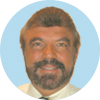In 1971, when I began my practice, acupuncture was not accepted by anyone except a handful of radical medical and chiropractic doctors - and millions of hopeful patients nationally. There was no such thing as an acupuncturist. Thanks to the wonderful early education in acupuncture offered by a few of the chiropractic colleges, my personal practice thrived. Interestingly enough, the very profession of acupuncture that I helped pioneer in this country is now on the attack against DCs who practice acupuncture. The acupuncturists' criticism is that DCs and MDs are untrained in acupuncture and a danger to society, due to their education being considerably less than that offered at the typical acupuncture school. As I write for this publication concerning issues relating to the politics of chiropractic and acupuncture, the e-mail, phone calls, and letters with hate responses and name-calling - from people outside of the chiropractic profession - cannot be overlooked.
It seems I am consistently consulting with a state chiropractic association or board whose acupuncture credentialing or usage is being challenged by acupuncturist organizations. Some states are in the process of expanding their chiropractic scope of practice to include acupuncture; I have been involved in that fight, as well. I constantly hear the same worn-out argument: "We're trained (acupuncturists), and you're not!" We are continually being whittled on and attacked, and this time, it is from the acupuncturists who want us eliminated at all costs.
The following report on the World Health Organization (WHO) guidelines for acupuncture education is extremely significant; infact, I highly suggest every state association and board review this material and use it constructively for the establishment of acupuncture within each state's scope of practice. I also refer you to my articles, "The Bottom Line" (www.chiroweb.com/archives/22/03/01.html) and "Do Chiropractic and Medical Physicians Have the Right to Practice Acupuncture?" (www.chiroweb.com/archives/17/15/08.html) These are very strong resources.
We in the chiropractic profession are extremely well-trained in acupuncture, and all of the programs being offered today through chiropractic colleges specifically meet the WHO guidelines for training level three, specific to the training of "qualified physicians and certain other medical graduates." The National Board of Chiropractic Examiners (NBCE) now tests specifically for acupuncture, and the American Chiropractic Association has just established the "College of Chiropractic Acupuncture." (Diplomate status - DACCA - will also be available soon. Contact me for further information.)
The core syllabus for education in acupuncture, as recommended by the WHO, is specific to levels one and three of the WHO guidelines for all chiropractic colleges offering acupuncture as a postgraduate program. The word "physician," when used, implies "doctor," and "medical" and "medicine" refer to the healing arts. Therefore, the practice of chiropractic, podiatry, osteopathy and dentistry are included in the WHO descriptions. The majority of this article [Part 1 and Part 2] is taken directly from the WHO guidelines. The WHO is, without question, one of the most internationally respected assemblages of educators, scientists, researchers and administrators ever formed, and it is accepted as the undisputed voice of health and welfare worldwide. Universities and governments accept its recommendations globally. It has taken a keen interest in the development of acupuncture and, having seen the need for an international common language to facilitate communication in teaching, research, clinical practice and exchange of information, it convened a scientific group in 1989 that approved a "Standard International Acupuncture Nomenclature." The WHO has encouraged and supported countries to identify safe and effective practices of acupuncture through research and proper application; In 1991, the WHO's 44th World Health Assembly urged nations to introduce measures for its regulation.
In 1995, a scientific group, assembled by the WHO, of more than 50 international experts developed a series of statements and guidelines on acupuncture relating to basic training, safety in clinical practice, indications and contraindications. These guidelines are intended to assist national health authorities in setting standards and establishing official examinations, and also medical schools and institutions wishing to arrange training programs. The guidelines cover basic requirements for training nonphysician acupuncturists and physicians wishing to use acupuncture in their clinical work. The guidelines also include a core syllabus for education.
Regarding "basic training" in acupuncture, the WHO guidelines clearly state:
"The increasing popularity in recent years of acupuncture as a form of therapy and the interest of some countries in introducing it into primary health care mean that national health authorities must ensure safety and competence in its use."
"Making use of acupuncture in modern medical care means taking it out of its traditional context and applying it as a therapeutic technique for a limited number of conditions for which it has been shown to be effective, without having to reconcile the underlying theories of modern and traditional medicine. In this type of situation, lengthy periods of instruction in traditional medicine as a background to acupuncture are neither feasible nor necessary and shorter training must suffice."
"It seems useful ... to provide guidelines for relatively short periods of theoretical and practical training in acupuncture which with well designed curricula and skilled instructors would be sufficient to ensure the safety and competence of those so trained."
The WHO guidelines for the use of acupuncture in national health systems specifically recommend (in item 2.2, under "Examination and Licensing"): "A system of examination and licensing would be needed to ensure the competence of those trained and to prevent unauthorized practice of acupuncture." With the establishment of the acupuncture examination of the NBCE, the chiropractic profession meets that guideline. Florida has specifically conducted a state-administered acupuncture examination for DCs since 1988, and Arizona has conducted one since 1983. Other states use the final examination of the college offering the training program as its examination for clinical competence.
Editor's note: Part 2 of this article is scheduled to appear in the June 14 issue.
John Amaro, DC, FIAMA, Dipl. Ac., LAc
Carefree, Arizona
Click here for previous articles by John Amaro, LAc, DC, Dipl. Ac.(NCCAOM), Dipl.Med.Ac.(IAMA).





